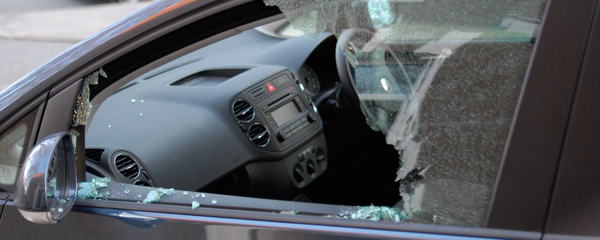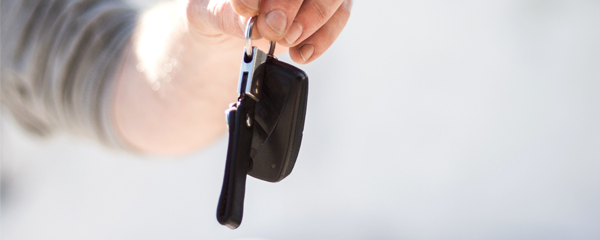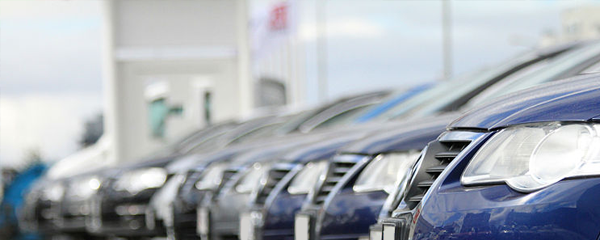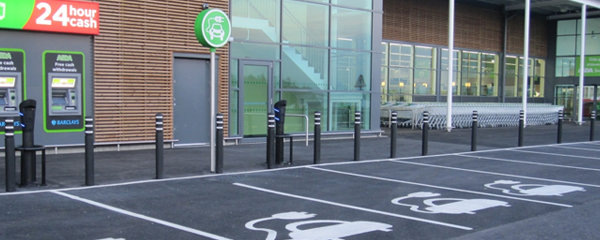Jan 17, 2018
West Yorkshire police issued more than double the amount of speeding tickets compared to any other police force in the UK, according to freedom of information data supplied by 19 different police forces to car leasing firm, UK Carline.
In total 142,610 speeding tickets were issued in 2017 by West Yorkshire Police, which was more than double number two on the list. Surrey Police issued 62,623 speeding tickets, followed by West Mercia on 62,503 speeding tickets.
West Yorkshire Police also hold the record for the highest recorded speed offence in 2017, catching a driver at 160 mph on a 70-mph speed limit road, more than double the national motorway speed limit. Dundee Police clocked an offender driving at 106 mph in a 30-mph speed limit, which is more than three times the national speed limit.
Freedom of information request
Car leasing brand, UK Carline submitted a freedom of information request to all 43 UK police forces. Of those who were contacted, 19 police forces answered back and provided detail on the total number of speeding tickets issued and the highest recorded speed offence during the same 12-month period on 70 mph roads and 30 mph roads.
This means that the information supplied does not display the full picture across the whole of the UK, but 19 police force responses does provide a good representative sample of volume of tickets and speed limits broken and at what level.
West Yorkshire’s speed cameras recorded 46 times as many drivers exceeding the speed limit than the police force with the lowest number, The City of London police force with 3,107 tickets issued in 2017.
The rate of speeding offences year on year rose by 13% in West Yorkshire, 24% in Surrey and a huge 32% in West Mercia, which is a sharp increase that some experts believe is partly due to better detection on smart motorways and the due to the introduction of the new 20 mph speed limit in built up areas that is catching drives out who are not aware of the changed zones.
 © Copyright Jim Barton and licensed for reuse under this Creative Commons Licence.
© Copyright Jim Barton and licensed for reuse under this Creative Commons Licence.
Police forces with most speeding tickets issued in 2017
1. West Yorkshire – 142,610
2. Surrey – 62,623
3. West Mercia – 62,503
4. Dundee – 60,465
5. North Wales – 57,224
6. Kent – 53,590
7. Lancashire – 51,455
8. Humberside – 49,982
9. Norfolk – 49,730
10. Dorset – 45,344
Top speeds clocked in 70mph zones
1. West Yorkshire – 160mph
2. Surrey – 150mph
3. Kent – 150mph
4. Lincolnshire – 149mph
5. Dundee – 148mph
Top speeds clocked in 30mph zones
1. Dundee – 106mph
2. West Yorkshire – 102mph
3. Dorset – 96mph
4. Warwickshire – 95mph
5. Gwent – 94mph
[Source: UK Carline FOI request to 43 police forces – 19 forces responded]
Speed awareness courses on the rise
New information supplied by the National Driver Offender Retraining Scheme has shown that the rate of speed awareness courses attended in the UK has increased by a massive 330% year on year and earned the police an additional £57 million, which according to NDORS is largely due to new 20 mph low speed zones in built up areas.
The vast increase in drivers caught by low-speed zones has more than doubled the rate of drivers on awareness courses who choose a course and avoid paying a fine and 3 points on the licence. If, however they are caught again within 3 years the fine and points are retrospectively applied.
Recent changes to the fine system now mean that it depends on two factors, the first depends on your weekly wage and the second is the circumstances within which you were caught speeding.
Using this new approach to fines means a fine is on a sliding scale that could be thousands of pounds and extra points depending on the severity of the speeding offence. It really is the worst time to get caught speeding on Britain’s roads. However, the good news is that there are some things you can do about it to make sure you drive in a more sensible way and minimise the chance of getting caught speeding.
How to protect your licence and have better driving habits
The most obvious thing to do is slow down and drive at or under the speed limit, which of course is what we should ALL adhere to as often as possible. But this is not always a practical course of action, especially if you are driving in an unfamiliar location and you don’t know the speed limit or the location of cameras waiting to catch drivers out.
You may be driving on a UK motorway at the national speed limit of 70 mph, but this would cause congestion when all other road users are driving at 80 mph or more. This may encourage you to exceed the speed limit to stay with the traffic flow. Smart motorways with variable speed cameras are now operating and change the speed limit often, which can also catch drivers out unwittingly when it changes.
Using a speed camera detector is an inexpensive way of knowing the speed limit at all times and they make you aware of the location of speed cameras from a database of known static locations and mobile van locations. But that doesn’t always work. About 30% of speed cameras are not in operation and police officers may be using a radar gun or mobile van with a laser system in a new location that isn’t on a GPS database.
Drivesmart have launched a speed camera detection product called Alpha. It combines GPS database data with radar and laser detection up to 800 meters away of any forthcoming historic speed camera location or a radar or laser system in use ahead of you.
Using a speed camera detector like Drivesmart Alpha improves the driving habits as it makes drivers slow down way before reaching speed camera locations rather than braking sharply and causing risk to other road users.
PetrolPrices has agreed an exclusive 28% discount (£50 off) the new Drivesmart Alpha for members, which is one of the best speed camera detectors in the market at the moment.
Click on find out more to see details of this great member offer.
What do you think of speeding tickets and how many are issued? Were you caught recently and did you choose a speed awareness course to avoid a fine and points? And what are your thoughts on speed camera detection systems. Worth buying for peace of mind or not worth it? Let us know in the comments below.
Jan 17, 2018
For many years, white has been the most popular colour choice for cars but a new study of sales, over the last year, shows a change – favouring black, over white. For the first time in four years, white has been knocked off the top of the list and replaced with its opposite, but is there a reason behind the switch?
In the figures
According to the statistics, there were 515,970 new black cars registered last year followed by 500,714 grey cars and 482,099 white cars. The figures come from the Society of Motor Manufacturers and Traders who released a table of the ten most popular car colours this week.
- 1. Black
- 2. Grey
- 3. White
- 4. Blue
- 5. Silver
- 6. Red
- 7. Green
- 8. Orange
- 9. Bronze
- 10. Yellow
According to colour psychologists, one of the most captivating trends is the rise of the colour grey. With all the uncertainty and insecurity, we are facing; such as Brexit and last year’s US Elections, grey is an unconscious move towards something safe.
 © Copyright tOrange and licensed for reuse under this Creative Commons Licence.
© Copyright tOrange and licensed for reuse under this Creative Commons Licence.
Changing trends
In fact, some areas of the country see grey being the most popular colour. In the East Midlands, grey is the most popular and a primary colour has not made the top three in seven years. Monochrome cars (black, grey and white) now account for 60% of all vehicles sold and silver covers a further 10%.
White remains top of the list for many areas of the country including northern England, Scotland, Wales and Northern Ireland. However, densely populated areas such as the south of England are showing a preference to black, this being shown in the overall figures.
But for colour fans, there are plenty to choose from. Green, yellow and orange now have a market share of 2.3%, and bronze has re-entered the roster replacing dull brown. The fastest increasing colour is gold which has increased by 19.1% in the last twelve months – although there are still only 1 in 500 cars requested in this shade.
There are other more practical reasons as to why black is a favoured colour for new cars. For example, company fleets tend to lean towards black, with cab companies topping the list. With sales to private customers dipping by nearly 7% in 2017, there’s a significant influence from the commercial buyer in these figures.
Most popular car
While the number of new vehicles is dropping compared to previous years, the models that are most popular remain consistent. The Ford Fiesta still tops the list for the 9th successive year with over 94,500 new registrations. New models launched in the year also offer an excellent choice for drivers.
Second place went to the VW Golf with over 74,600 registrations, a rise from 4th place in 2016. This choice shows that concerns over the diesel emissions scandal haven’t impacted people’s decision to buy a VW car.
The Ford Focus is in third place, retaining its position from the previous year with nearly 70,000 new models sold in 2017. Despite a higher than average price for the vehicle, compared to similar models from other manufacturers, it remains in a strong position.
The fourth was the Nissan Qashqai, a rise of one place from the previous year. The UK built car had just over 64,000 new vehicles registered last year. It moved ahead of the Vauxhall Corsa which fell from 2nd to 5th place in 2017, a drop of some 25,000 sales on the previous year.
Cost of colour
Interestingly, of the three most popular models, the Ford Fiesta and Focus were sold mostly in blue over any other colour. While the VW Golf was most popular in grey. Costs for different types of paint also vary, with Indium Grey Metallic on the Golf costing an extra £575 while Blue Wave on the Fiesta cost an extra £745. So, there may be an additional charge for the colour you want, and this might factor into why people are opting for free primary shades.
Would you pay extra to have a certain colour of car? Is colour an important criteria when choosing a car? Let us know your thoughts in the comments below.
Jan 17, 2018
Figures show that nearly one-quarter of a million cars were broken into in the UK in 2016 which is an increase of 4% on the previous year. The 42 police forces around the country received a total of 239,920 reports of break-ins which is an increase of 8,698 on 2015. According to the RAC, forgetting devices such as smartphones and satnavs could be playing a big part in the rise.
A varied picture
While there was an increase in the number of cases reported on 2015, the overall figure is still 9% lower than it was five years ago when there were 263,574 break-ins during the year. Of the police forces that provided updates to the RAC, Northamptonshire saw the second most significant increase in the percentage of thefts from vehicles – up 41% from 2015, with the number of reported crimes rising from 2,864 to 4,043.
The City of London saw a substantial rise, a vast 76% in the number of cases rising from 46 to 81. Other forces that saw a considerable increase were Wiltshire and Dyfed-Powys where there was 23% rise in the cases reported to 2,074 and 549 respectively.
Some areas saw a decrease in the number of cases. Cheshire saw a decline in their figures with a drop of 19% from 2015. Cumbria saw an 11% decrease from 780 to 697 cases, while North Wales saw a reduction of 10% in cases from 1,326 to 1,187.
 © Copyright Mike Knell and licensed for reuse under this Creative Commons Licence.
© Copyright Mike Knell and licensed for reuse under this Creative Commons Licence.
Opportunistic thieves
Overall, the RAC believe there is a worrying trend that saw more than half of police forces report a rise in this type of crime in 2016 compared to the previous year. They firmly believe that opportunistic thieves, who spot gadgets left in vehicles, are the reason for the rise.
Most break-ins occur due to thieves finding something of value that has been left the vehicle, that can be quickly and easily sold on, said Mark Godfrey, director of RAC Insurance. Drivers have become more complacent about leaving devices in vehicles on display.
People often leave their smartphones in the car which are also very attractive to a passing thief. Using the smartphone as a satnav means people often forget to remove them from the cradle they use for this purpose – and this leaves them easy to spot.
Ignoring alarms
Another problem is that we are becoming somewhat immune to the sound of a car alarm. At one time, an alarm sounding would bring people to the window to see what was going on and would increase the risk for thieves. But now, we often ignore the sound of a car alarm, and this makes the prospect less of a deterrent for thieves.
Many people think that a car alarm is a great measure to stop thieves, and that their devices will be safe inside their cars because of them. But our habit of ignoring the sound of an alarm, assuming it is just malfunctioning, or a window is open, means that these alerts are no longer effective.
Car theft
As well as stealing from inside vehicles, theft of the entire vehicle is also on the increase. According to figures, there has been a rise of 30% in the last three years across the UK, and criminal gangs are starting to use more sophisticated techniques than ever.
As technology advances, thieves are using techniques such as car hacking to access keyless entry systems. By using pairs of radio transmitters, to intercept the signal from key to the car, they can locate the vehicle in less than a minute.
So not only do we need to be aware of what we leave in our vehicle, but we also need to take a moment to think about where we park our cars. Use well-lit spots, near the house and consider adding old-school security on top of the modern options to protect the whole vehicle.
Are you guilty of leaving tech behind in your car when you pop into the shops? Have you ever had anything stolen from your car? Let us know in the comments below
Jan 11, 2018
Data from the Society of Motor Manufacturers and Traders has shown that, for the first time since 2011, new car sales are down with a 5.7% drop compared to 2016 and the Government’s negativity about diesel cars is being blamed for this.
The stats to prove it
This blame is backed up by statistics which show that diesel sales were down by 17% in 2017 and it is thought that this is due to consumers being put off by new taxes which have been brought in for this particular type of vehicle.
Sales of unleaded vehicles were up by 2.8% and electric and hybrid cars gained a market share of around 4.7% which shows that people are moving away from purchasing those which run on diesel.
2.54 million new cars were bought in 2017 compared to 2.69 million which were purchased in 2016 with April seeing the worst monthly year on year drop at 19.8% and December completing the year with the second highest decline at 13.9%.
December also saw the biggest fall in new diesel registrations as these were down by 31.1%, which equates to around 220,000 vehicles, and these sales were also down by approximately 30% in October and November.

What effect is it having?
This drop in diesel sales isn’t only bad for car manufacturers, but it is also having a negative effect on the environment. In fact, we have seen the first rise in emission levels since records began around 20 years ago which is devastating news for those who have been working so hard to reduce these over the years.
It is no secret that consumer confidence has fallen when it comes to diesel vehicles, especially when the Government keep introducing new money making taxes which penalise those who drive them, including changes to vehicle excise duty, London’s toxicity tax, and a threat to ban diesels from ‘clean air zones’ across the UK.
Philip Hammond’s November Budget also dealt a blow to those considering a diesel car as he announced that anyone who bought one after April 2018 would face a higher tax band which could result in a £500 increase, suggesting that sales of diesel cars will surely continue to fall.
Despite manufacturers best efforts
Despite car manufacturer’s attempts to tempt people to purchase new cars through scrappage schemes, most of which are available until the end of March 2018, this did not do enough to boost sales with many people preferring to hang onto their old car than to risk paying increased taxes on a newer, more eco-friendly model.
SMMT chief executive Mike Hawes has said that this will not only increase running costs for motorists but will also prevent the country from meeting its environmental goals due to the emissions being produced. He also said that he believes that people should be able to choose the car which suits their lifestyle, whether this be a petrol, diesel, hybrid or electric model.
Who suffered the worst?
There are some car manufacturers which have been hit harder than others due to these reduced vehicle sales. Vauxhall saw a 22.2% decline with 55,818 fewer cars being sold in 2017 compared to 2016, however they are the second most bought car brand with total sales of 250,955. Fiat suffered 16,000 fewer sales which equates to 27%, but Volkswagen saw their sales increase from 207,028 to 208,462 despite being at the centre of 2015’s emissions cheat scandal, and is the 3rd most popular car brand in the UK.
As in previous years, Ford have come out on top as being the number one car brand in the UK and selling the first and third most bought cars in 2017: the Fiesta which was sold to 94,533 buyers and the Focus which saw sales of 69,903. The 2nd bestselling car was the Volkswagen Gold with sales of 74,605 for the year.
With so much negativity surrounding diesel cars it is unsurprising that consumer are both cautious and confused, so it may be time for the Government to start making their messaging a little clearer so people can be confident when choosing the car that best suits them.
Did you buy a new car in 2017? Are you being put off buying a diesel car with recent events? Let us know your thoughts in the comments below.
Jan 10, 2018
If you have bought a second-hand car it may be worth checking if you could be one of potentially hundreds of thousands of British motorists who have been mis-sold their car as having “one owner” when it has actually been used as a rental or company car.
This recently discovered mis-selling scandal has brought to light that some car manufacturers and dealers have been selling cars under false pretences by stating that they have only been owned by one person when they have in fact been driven by many individuals. This is an issue as it can mean that the vehicle has sustained more wear and tear that it would have otherwise.
Whats the issue?
Those who have been sold a second-hand car with this information being withheld from them could be eligible for compensation of between 25 and 100% of the price that they paid for the car as this practice may violate Consumer Protection for Unfair Trading Regulations 2008.
It is estimated that 1 million former rental or company cars are sold in the UK each year, which is not a problem if the buyer is told that this is the case and the car has been well looked after and maintained during its time as a fleet vehicle, but this is not always the case.
 © Copyright Helgi Halldórsson and licensed for reuse under this Creative Commons Licence.
© Copyright Helgi Halldórsson and licensed for reuse under this Creative Commons Licence.
Dealer transparency
Since this mis-selling tactic has been discovered, the Advertising Standards Authority have said that they will warn car manufacturers and dealers that they must be transparent about a car’s history during the sales process as they should not be withholding information which is deemed as being vital for buyers.
They have also published an online advice guide for those who sell ex-fleet vehicles which states that they must tell interested buyers what the car has been used for in the past. This is important as what the car has been used for could influence the individual’s decision to purchase it as they would probably feel differently about a car which had only been driven by one careful owner than they would about one which had been used as a rental or company car.
“Interim measures in place”
Fiat Chrysler were caught out for this by the ASA in October when they advertised two Alfa Romeos online but failed to mention that one has been a company car and one had been used for training purposes. Since then they have stated that they have put interim measures in place to prevent anything like this from happening again.
Mr Damon Parker, the Head of Litigation at law firm Harcus Sinclair has said that around 200 people have reported that a car has been mis-sold using this tactic in the past week, and although they could be entitled to between 25 and 100% of the price they paid for the car it is likely to be at the lower end of this estimation. He also stated that these incidences will be looked at on a case-by-case basis rather than through an industry wide lawsuit.
What can you do?
If you are buying a second-hand car there are a number of things that you can do to ensure that you have all of the details you need about it before you commit to making a purchase. For example, always check the log book, use the DVLA’s vehicle information checker, and verify the car’s MOT history so that you are confident that everything is in order before you part with your money.
Should the car that you are looking at have been used as a rental or company car before this doesn’t mean that it should be avoided, in fact they can be a great choice depending on what you are looking for. It is just important that you are aware of how much it may have been used and by how many people just in case this has had a negative impact on the vehicle.
Have you ever had doubts about your cars history? Do you see any issue in not knowing where and how your new car has been used before? Let us know in the comments below.
Jan 10, 2018
According to insurance giant AXA, the UK doesn’t have the infrastructure in place to cope with the growing numbers of electric cars on the road. A shortage of charging points, as well as the strain on energy supplies the new demand creates, may be acting as a barrier to the rise of driverless electric cars, say the insurer.
Practical problems
In fact, concerns about the lack of places to charge these cars and how the National Grid will cope with the extra demand have overtaken worries around liability and technical questions holding up the advance of driverless cars.
Amanda Blanc, the UK boss of the company, is herself the owner of an electric Tesla car and recounted some of the problems she has seen. There is around 125,000 plug-in electric cars on the UK roads – and just 14,000 charging point. Only 2,620 of these are rapid charges that supply 80% of power in just half an hour. Shell has just opened their first charging points for electric cars in 10 filling stations, mostly in the south-east and London.
During a recent long-distance trip, Blanc demonstrated the issues. On a trip to Edinburgh, she stopped twice to use a supercharger but went for coffee while the car charged. She pointed out that in 3-4 years, people will not want to queue for a supercharger and infrastructure is needed to solve this problem.
 © Copyright Glen Wallace and licensed for reuse under this Creative Commons Licence.
© Copyright Glen Wallace and licensed for reuse under this Creative Commons Licence.
Electricity supply concerns
Another big worry is that the strain on the electricity grid. According to National Grid, the growing number of electric vehicles could see electricity peak demand jump by more than the capacity of the Hinkley Point C nuclear power station by 2030.
Blanc made an example – if everyone pops out during the break in Coronation Street to put the kettle on, there’s a surge. But what will it be like when everyone comes home from work around 6 pm and puts their electric car on to charge?
AXA is one of the biggest backers of self-driving and electric cars, and Blanc believes children born today won’t need to learn how to drive. She foresees everyone driving around in ‘robo-cars’ that will reduce pollution, be cheap to run and give mobility to everyone, not just those who can drive.
Norway example
A leading example of the switch to electric is Norway. The Scandinavian country sees more than 50% of all new cars sold, being either electric or hybrid, as the country positions itself as a pioneer in the carbon-free transport world.
Zero emission vehicles, mostly electric, accounted for 20.9% of all sales in 2017. Hybrid cars were 31.3% of all sales, including 18.4% for the plug-in hybrids, they announced. It is an increase from 15.7% and 24.5% for the previous year, and positions the company at the forefront of electric road transport.
It comes despite the country being the most significant producer of oil in western Europe. It has set a goal of selling only zero-emission cars from 2025. Electric vehicles also benefit from a generous tax system to make their purchase price very competitive, and owners benefit from free city tolls, ferries, parking and recharging in public car parks. They can even drive in bus lanes, although some measures are intended to be reduced soon.
The liability question
Another big hurdle to overcome regarding driverless cars is to come up with a solution around liability, when a car is in driverless mode. Previously, insurers were uncertain who would be liable when a driverless car was involved in an accident, but a draft bill from the government will clarify the issue, removing another potential block.
It will mean that insurers will automatically pay out if a motorist crashes a car in self-drive mode with the question of whether man or machine was to blame being sorted out between underwriter and car maker. It frees up the further development of this type of vehicle.
Do you agree that the UK may not be ready for an electric overhaul? How long will it postpone the surge in demand? Let us know in the comments below.
 © Copyright Jim Barton and licensed for reuse under this Creative Commons Licence.
© Copyright Jim Barton and licensed for reuse under this Creative Commons Licence.



